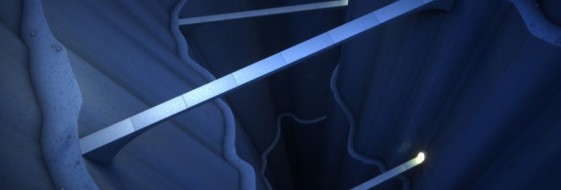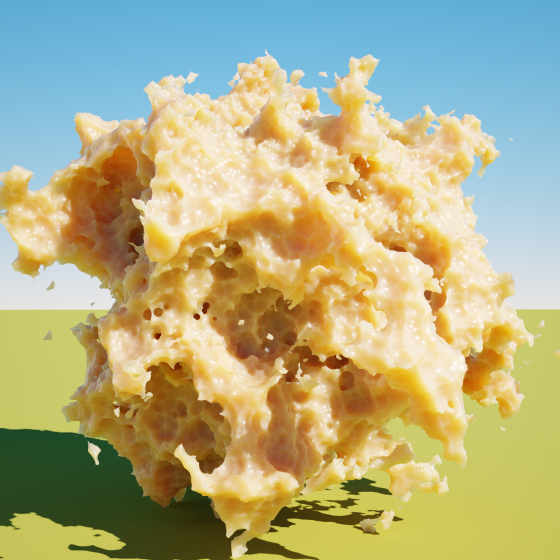A new media format designed for virtual/augmented reality is just the tip of the iceberg.
Otoy seems to believe in the sports cliché “go big or go home.” This week at the GPU Technology Conference in San Jose, the well-funded start-up introduced a new free application for creating photorealistic content for virtual and augmented reality and announced a new file format to support AR/VR that it intends to release as open source. Otoy also announced a major update to Octane Render.

OctaneVR
Otoy says OctaneVR will be “the world’s first production-ready renderer for VR, AR and Holographic Cinema” when it goes live in April. The product will be free for an indefinite period, “as a means of encouraging artists and commercial content creators to experiment freely,” says Otoy.
OctaneVR supports one-click exporting of VR images and animations in a format that can be directly viewed with the Oculus 360 Photos and Oculus 360 Videos apps on the Samsung Galaxy Gear VR. Navigable VR content and menus created with Octane Lua scripts can be exported as an ORBX file from OctaneVR and viewed through Otoy’s ORBX Media Player app on GearVR.
OctaneVR will be released on Windows, OS X and Linux.
Otoy is also releasing the ORBX media format, a new file type for exchanging scenes, materials, lighting and other rendering assets. The file will hold pre-rendered data in the form of light-field render target caching for VR/AR and portals. The format will support movie and audio textures such as MP4 and HEVC. Otoy plans to make the format open source; it will release the specifications when Octane Render 3 ships.
Octane Render 3
Octane Render is a VFX production renderer that works with GPUs as opposed to most other rendering products which only use CPU resources. It supports industry open standards for shading and particle simulations, and offers a live and offline baking tool chain for game engines including Unreal Engine 4 and Unity.
New in release 3:
Volumetric rendering: OctaneRender 3 supports the ability to render particulate matter such as clouds, smoke, fog, and fire with varying densities and introduces a native primitive type for detailed micro-surface displacement volumes and surfaces required to render photorealistic natural and organic materials. Dreamworks’ OpenVDB is also supported for direct in-camera rendering of particle simulations.

Open Shader Language (OpenSL) support: Through OpenSL, content creators have the ability to build their own materials, procedural textures, and shaders.
OpenCL support: OctaneRender 3 will support the broadest range of processors possible using OpenCL to run on Intel CPUs with support for out-of-core geometry, OpenCL FPGAs and ASICs, and AMD GPUs.
Deep pixel rendering: OctaneRender 3 adds deep pixel rendering support, as well as live connecting of DCC and compositing apps through Octane plug-ins for Pixologic’s Zbrush and The Foundry’s Nuke. OctaneRender 3 will also ship with a built-in plugin for Adobe Photoshop that will handle multi-layer EXR files and support live deep pixel layer composting within Photoshop.
Advanced live texture baking: Most beneficial for use in real-time game engines, OctaneRender 3 supports unbiased GPU texture baking (UV or volumetric) of global illumination, spherical harmonics and 8D light fields in Unreal Engine 4 and Unity plugins.
Infinite mesh and polygon sizes: OctaneRender 3 removes all limits on the maximum allowed primitive and triangle count.
FBX and PTEX support: OctaneRender 3 supports importing data from Autodesk’s FBX file format and Disney’s PTEX texture file format.
Split render passes, advanced per object reflection controls: OctaneRender 3 allows artists to split render passes into raw lighting and albedo passes, and adds fine-grained reflection, shadow and illumination casting controls per object or layer. These elements can also be built into the export, whether it is a light field, VR scene, or a movie file.
Otoy will be inviting select users to participate in the alpha release of OctaneRender 3 this summer, with a full release slated for the second half of this year.
What do we think?
The Virtual/augmented reality market is starting to explode. Otoy intends to be a leader, and is making the big moves it believes are necessary to stay on top as demand for VR/AR content grows. Founder/CEO Jules Urbach is already talking about holodeck technology as just around the corner. “We are betting that once people get a glimpse of what can be done in VR, they are not going to want to see their content experiences any other way.”





